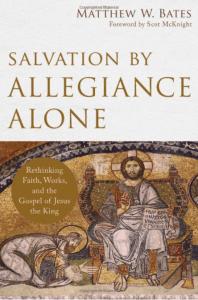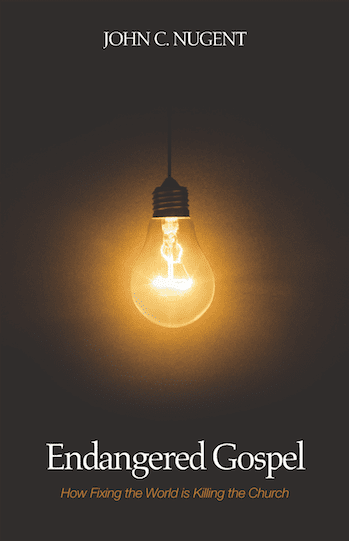 Often enough folks say Jesus preached the gospel of the kingdom, John the gospel of eternal life and Paul the gospel of justification. Tim Keller joins these folks in his new book, Center Church. Keller’s intent though is not so much to join the chorus of diversity within the New Testament as to say the gospel can be expressed in a variety of ways.
Often enough folks say Jesus preached the gospel of the kingdom, John the gospel of eternal life and Paul the gospel of justification. Tim Keller joins these folks in his new book, Center Church. Keller’s intent though is not so much to join the chorus of diversity within the New Testament as to say the gospel can be expressed in a variety of ways.
How diverse is Tim Keller’s gospel? What do you think of his grid for how to comprehend each of the various themes for the Bible’s plot line?
A bit of context. Back in the 70s and 80s there was considerable consternation when my professor, James D.G. Dunn, wrote his book Unity and Diversity in the New Testament, in which he argued for considerable diversity at work in the earliest faith of the earliest Christians that grew up around a solid, stable kerygmatic core (about Christ, I might add). So when Keller taps into the diversity theme he’s not suggesting the kind of diversity some have proposed but a kerygmatic diversity, a contextualizing necessity when expressing the gospel.
Keller contends the gospel must be tied to Bible’s Story Line, and suggests there are two factors at work: the synchronic (what the Bible says at specific time) and the diachronic (what narrative the Bible is telling). I’m not so sure his suggestion that the synchronic is the STM (systematic theology method) is the way I’d say it: the synchronic is more an articulation at a specific time rather than a synthesis of it all in a timeless fashion. Still, there’s the timely and the ongoing time arc.
Regardless, Keller explores three themes — Home/Exile, Yahweh/Covenant, Kingdom — in their basic narrative arc (the diachronic approach to gospel). And I agree with Keller that (1) the gospel can be articulated through a variety of themes and (2) the narrative arc of the Bible provides the clue. It’s just that in the end Keller sends each theme through his covenant soterian grid. Here’s how each theme is understood:
First, what God wants for us (creation); second, what happened to us and what went wrong (fall); third, what God has done in Jesus Christ to put things right (redemption); and fourth, how history will turn out in the end (restoration). Specifically now:
Home/Exile: made for rest and shalom; problem is self-centeredness and destroying shalom; Israel is exiled in Egypt and Babylon; Jesus is rejected and resurrected Lord who breaks the power of death; restoration is the garden-city. Yahweh/Covenant: made for faithful covenant love and relation with God; problem is unfaithfulness causing curse and wrath (well, death is not the same as wrath); Israel is called to faithfulness but isn’t; Jesus is suffering servant but new covenant Lord who takes curse of sin; restoration is marriage supper of the Lamb. And Kingdom: made for God’s kingdom and kingliness; problem is idolatry, causing enslavement; Israel is looking for a true judge/king; Jesus is returning true king who frees us from world, flesh and devil; the restoration is true freedom under the reign of God.
In the end, Keller’s gospel is less diverse than the opening suggests though in this chp he opens his approach up to more of Israel’s Story. His gospel is a redemption through substitution. Diversity of articulation — all over the Bible — from Genesis to Revelation and rarely do authors use the categories of those who preceded them — but Paul says there is one gospel and it is the apostolic gospel, and it can be found at 1 Cor 15, the sermons in Acts and in expanded form in the Gospels. So I would find the core gospel in christology, not redemption through substitution, and see the diversity as variations on that christology (including redemption through substitution), while I think Keller would see it as variations of redemptive themes (via christology).











